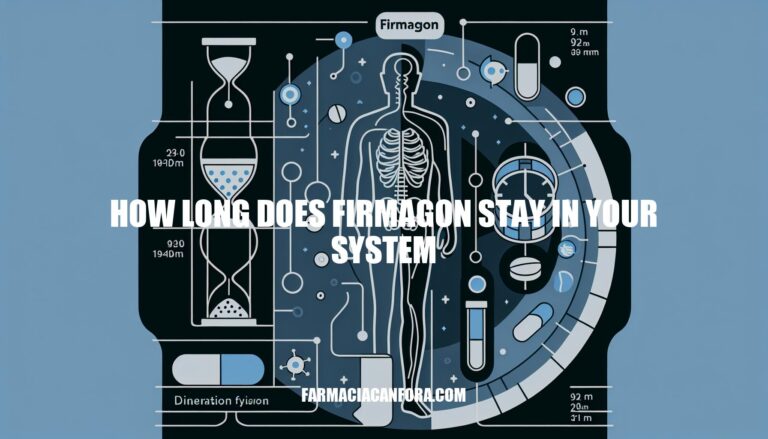


Firmagon (degarelix) is a medication used to treat advanced prostate cancer by reducing testosterone levels in the body. After each injection, Firmagon is slowly released into the system over a month. Understanding how long Firmagon stays in the system is crucial for patients to manage their treatment schedules and anticipate side effects. This knowledge helps ensure the medication’s effectiveness and allows for better planning of follow-up appointments and monitoring.
Firmagon, containing the active ingredient degarelix, is a gonadotropin-releasing hormone (GnRH) antagonist. It works by binding to GnRH receptors in the pituitary gland, which reduces the secretion of gonadotropins (LH and FSH). This, in turn, lowers testosterone production in the testes, which is crucial for the growth of prostate cancer cells.
The mechanism of action of Firmagon leads to an immediate reduction in testosterone levels without the initial surge seen with GnRH agonists. This immediate effect helps in quickly controlling the symptoms of prostate cancer. The duration Firmagon stays in the system is influenced by its pharmacokinetics, with a half-life of approximately 53 days, allowing for monthly dosing.
Here’s a detailed look at the pharmacokinetics of Firmagon (degarelix):
Absorption: Firmagon is administered via subcutaneous injection. It is rapidly absorbed, with peak plasma concentrations typically reached within 3 days.
Distribution: The drug is highly protein-bound (about 90%) and has a large volume of distribution (>1000 L), indicating extensive distribution throughout the body.
Metabolism: Firmagon is metabolized primarily in the liver through peptide hydrolysis.
Excretion: The drug is excreted mainly through feces (70-80%) and to a lesser extent through urine (20-30%). The half-life of Firmagon is approximately 53 days.
Given its half-life, Firmagon can stay in your system for several months after the last dose. This extended duration is due to its slow elimination process.
Firmagon (degarelix) is a gonadotropin-releasing hormone (GnRH) antagonist used in the treatment of advanced prostate cancer. Here are specific details on its duration in the system, supported by clinical data:
These points provide a clear picture of how long Firmagon stays active in the system and its effectiveness over time.
Here are the key factors that can influence how long Firmagon (degarelix) stays in your system:
Dosage: Higher doses of Firmagon can extend the time it remains in your body. The initial dose is typically higher (240 mg) followed by maintenance doses (80 mg) every 28 days.
Frequency of Administration: Regular, consistent dosing can lead to a steady state of the drug in your system, affecting how long it stays detectable.
Individual Patient Characteristics:
These factors collectively determine the duration Firmagon remains active and detectable in your system. If you have any specific concerns, it’s always best to discuss them with your healthcare provider.
Monitoring and follow-up appointments are crucial when using Firmagon (degarelix) for several reasons:
These steps ensure that your treatment is both safe and effective.
Firmagon (degarelix) is a medication used to treat advanced prostate cancer by reducing testosterone levels. It has a half-life of approximately 53 days, allowing it to stay in the system for several months after the last dose.
The duration Firmagon stays active can be influenced by dosage, frequency of administration, and individual patient characteristics such as age, body weight, and overall health.
Regular monitoring and follow-up appointments are crucial to ensure the medication remains effective and to manage any side effects.
It is essential to consult healthcare providers for personalized information on how long Firmagon will stay in your system.